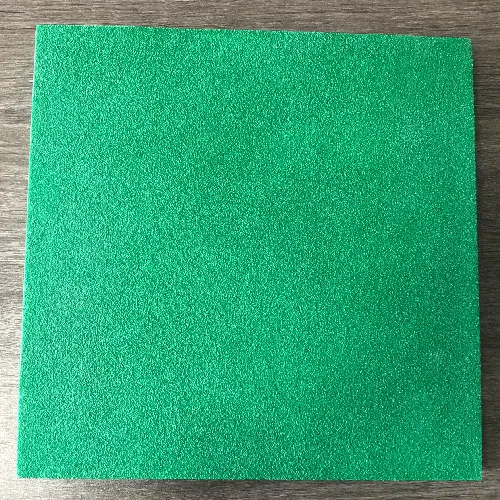loading...
- No. 9, Xingyuan South Street, Dongwaihuan Road, Zaoqiang County, Hengshui, Hebei, China
- admin@zjcomposites.com
- +86 15097380338
- Welcome to visit our website!
Exploring the Benefits of FRP Walkways Incorporating Solar Energy for Sustainable Outdoor Spaces
The Rise of FRP Walkway Solar Solutions
In recent years, the push for renewable energy and sustainable construction practices has taken on new importance in the quest to combat climate change. One innovative solution that has gained traction is the integration of solar energy systems into fiber-reinforced plastic (FRP) walkways. This combination not only showcases the potential of renewable energy but also enhances the functionality and sustainability of pedestrian pathways.
FRP, known for its lightweight properties and high strength-to-weight ratio, has revolutionized construction and design across various industries. Walkways made of FRP are highly favored in environments where traditional materials may falter due to corrosion, heavy traffic, or environmental exposure. The integration of solar panels onto these FRP walkways represents a remarkable synthesis of function and sustainability.
The Rise of FRP Walkway Solar Solutions
One significant advantage of using FRP in solar walkways is its durability. Unlike traditional materials like wood or concrete, FRP is resistant to moisture, UV radiation, and chemical exposure. This resistance not only extends the lifespan of the walkway but also ensures that the embedded solar panels maintain their efficiency over time. In regions prone to extreme weather conditions, FRP walkways provide a reliable and sustainable solution.
frp walkway solar

The aesthetic versatility of FRP also plays a critical role in the adoption of solar walkways. Available in various colors and designs, FRP can cater to the specific aesthetic needs of urban planners and architects, making it an appealing option for public spaces, parks, and commercial properties. When combined with solar technology, these walkways can enhance the beauty of an area while promoting eco-friendly practices.
Another critical aspect of FRP solar walkways is their contribution to energy independence. By localizing energy production, communities can reduce their reliance on fossil fuels and increase resilience against power outages. During daylight hours, the surplus energy generated by these walkways can be stored or redirected for various purposes, fostering a more self-sufficient energy system.
The installation of FRP solar walkways can also encourage a shift in public perception regarding renewable energy. As these walkways become more prevalent in cities, they serve as tangible reminders of sustainability efforts and the importance of green technology. Witnessing the integration of solar energy into everyday infrastructures can inspire individuals and communities to adopt more sustainable practices in their own lives.
Moreover, the implementation of FRP solar walkways reflects a growing trend of smart city development. These walkways can be equipped with sensors that monitor foot traffic, weather conditions, and energy usage, providing valuable data to city planners and researchers. This connectivity can lead to smarter urban designs, ultimately enhancing the quality of life in urban environments.
In conclusion, FRP walkway solar solutions represent an innovative convergence of renewable energy and sustainable infrastructure. By harnessing the durability of FRP and the power of solar energy, these walkways offer a forward-thinking approach to urban development and energy independence. As communities increasingly recognize the importance of sustainability, the integration of FRP and solar technology in walkways may very well become a standard practice, paving the way for a greener future.
-
Premium FRP Handrail for All ApplicationsNewsAug.29,2025
-
Low Maintenance FRP Mini Mesh Grating ProductsNewsAug.29,2025
-
Innovative FRP Square Tubes for Modern Industrial SolutionsNewsAug.29,2025
-
FRP Water Storage Tanks Wholesale Solutions for Bulk BuyersNewsAug.29,2025
-
FRP Molded Grating Solutions for Diverse Industrial ApplicationsNewsAug.29,2025
-
Construction Advancements Through FRP Pultruded ProfilesNewsAug.29,2025
-
Why Choose FRP Railings, Guardrails, and Handrail Systems?NewsAug.29,2025
